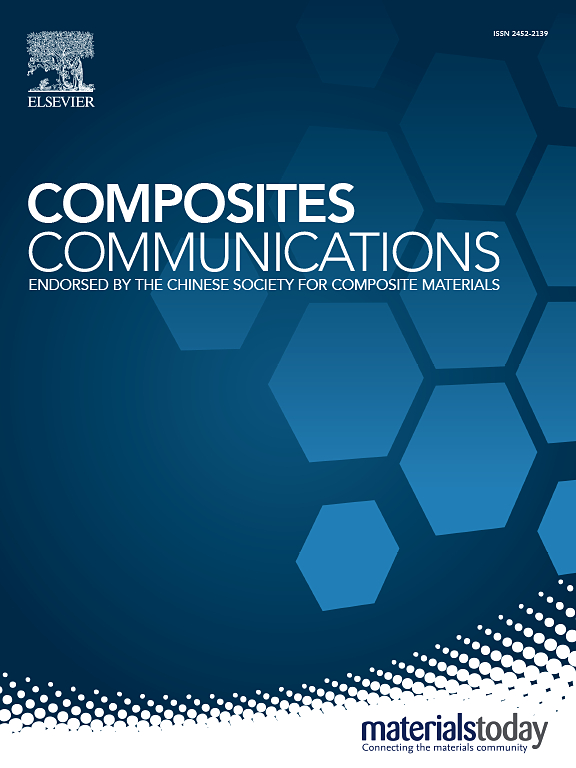Significantly anisotropic thermal conductivity improvement of PEEK composites with EMI shielding effectiveness
IF 6.5
2区 材料科学
Q1 MATERIALS SCIENCE, COMPOSITES
引用次数: 0
Abstract
The demand for polymeric composite materials with multifaceted performance has increased with rapid advancements in various sectors such as energy storage, 5G technology and electronic thermal management. Polyetheretherketone (PEEK), a thermoplastic polymer with superior mechanical properties, solvent resistance and thermal stability, is an ideal substrate for composite materials. However, traditional filler-reinforced PEEK composites often struggle to achieve the desired thermal conductivity due to filler agglomeration resulting in high interfacial thermal resistance (ITR). To address these issues, laminated (NH2-GnPs&MWCNTs)/PEEK composite films were fabricated by electrostatic spraying technique and hot pressing process, with hybrid fillers that interconnected to form a compact heat-conducting network. Amino-functionalised graphene was also incorporated, which enhanced the interfacial compatibility and reduced the ITR of composites. At a filler content of only 14.97 vol%, the in-plane and through-plane thermal conductivities of (NH2-GnPs&MWCNTs)/PEEK composite films reached 4.05 and 2.05 W m−1 K−1, respectively, by factors of 17.6 and 8.9 over pure PEEK matrix with a thermal conductivity of 0.23 W m−1 K−1. The Agari and Foygel models demonsrated that the composites formed an efficient three-dimensional conduction network and exhibited a reduced ITR. It is confirmed that the strategically synergistic fillers and electrostatic spraying laminated structure form a highly interconnected three-dimensional conduction network with some degree of orientation, thereby mitigating the interface scattering and increasing the mean free range of phonons. In addition, the composites displayed excellent electromagnetic interference-shielding capabilities and thermal stability, positioning them as dual-functional thermal management materials with significant application potential.

求助全文
约1分钟内获得全文
求助全文
来源期刊

Composites Communications
Materials Science-Ceramics and Composites
CiteScore
12.10
自引率
10.00%
发文量
340
审稿时长
36 days
期刊介绍:
Composites Communications (Compos. Commun.) is a peer-reviewed journal publishing short communications and letters on the latest advances in composites science and technology. With a rapid review and publication process, its goal is to disseminate new knowledge promptly within the composites community. The journal welcomes manuscripts presenting creative concepts and new findings in design, state-of-the-art approaches in processing, synthesis, characterization, and mechanics modeling. In addition to traditional fiber-/particulate-reinforced engineering composites, it encourages submissions on composites with exceptional physical, mechanical, and fracture properties, as well as those with unique functions and significant application potential. This includes biomimetic and bio-inspired composites for biomedical applications, functional nano-composites for thermal management and energy applications, and composites designed for extreme service environments.
文献相关原料
公司名称
产品信息
阿拉丁
sodium nitrite (NaNO2)
阿拉丁
4-4′-oxydiphenylamine (ODA)
 求助内容:
求助内容: 应助结果提醒方式:
应助结果提醒方式:


